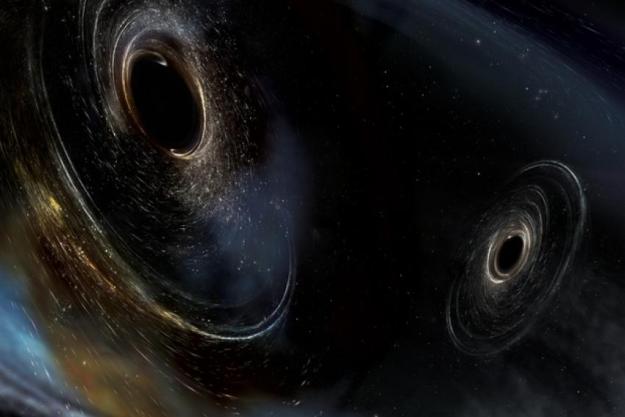The release of a remarkable image of the black hole at the center of our galaxy isn’t only an incredible scientific achievement — it also agrees precisely with predictions about what black holes are and how these strange objects are formed by the power of gravity.
The black hole, called Sagittarius A*, is a type called a supermassive black hole, which is found at the center of almost all galaxies. Ours is on the smaller end for such giants: At 4.3 million times the mass of the sun, it’s much smaller than other monsters like the one is Messier 87 which was imaged in 2019 and which is 6.5 billion times the mass of the sun.

However, images of these two black holes look notably similar, both showing a distinctive donut shape. And that agrees precisely with physicists’ predictions, which said that black holes would appear the same no matter what size they are.
“The fact that the light appears like a ring, with the black shadow inside, tells you it’s purely gravity,” black hole researcher Dimitrios Psaltis of the University of Arizona explained in a statement. “It’s all predicted by Einstein’s theory of general relativity, the only theory in the cosmos that does not care about scale.”
This scaling is unusual because most things that exist at different scales look very different — Psaltis gives the example of an ant and an elephant, which look very different because of, among other factors, the way their mass is supported. But black holes aren’t like that, it seems, as they are the same whether big or small. Messier 87 is 1,500 times more massive than Sagittarius A* and is vastly larger as well, as you can see in a comparison image from the European Southern Observatory. But the two look very similar.

That means that even very small black holes, if we were able to image them, would look like the images of Sagittarius A* and Messier 87. They would all show that similar donut shape.
“Wherever we look, we should see donuts, and they all should look more or less the same,” Psaltis said, “and the reason this is important — besides the fact that it confirms our prediction – is that nobody likes it. In physics, we tend to dislike a world where things don’t have an anchor point, a defined scale.”
Editors' Recommendations
- Biggest stellar black hole to date discovered in our galaxy
- Stunning image shows the magnetic fields of our galaxy’s supermassive black hole
- Scientists want your help to search for black holes
- This peculiar galaxy has two supermassive black holes at its heart
- Swift Observatory spots a black hole snacking on a nearby star




